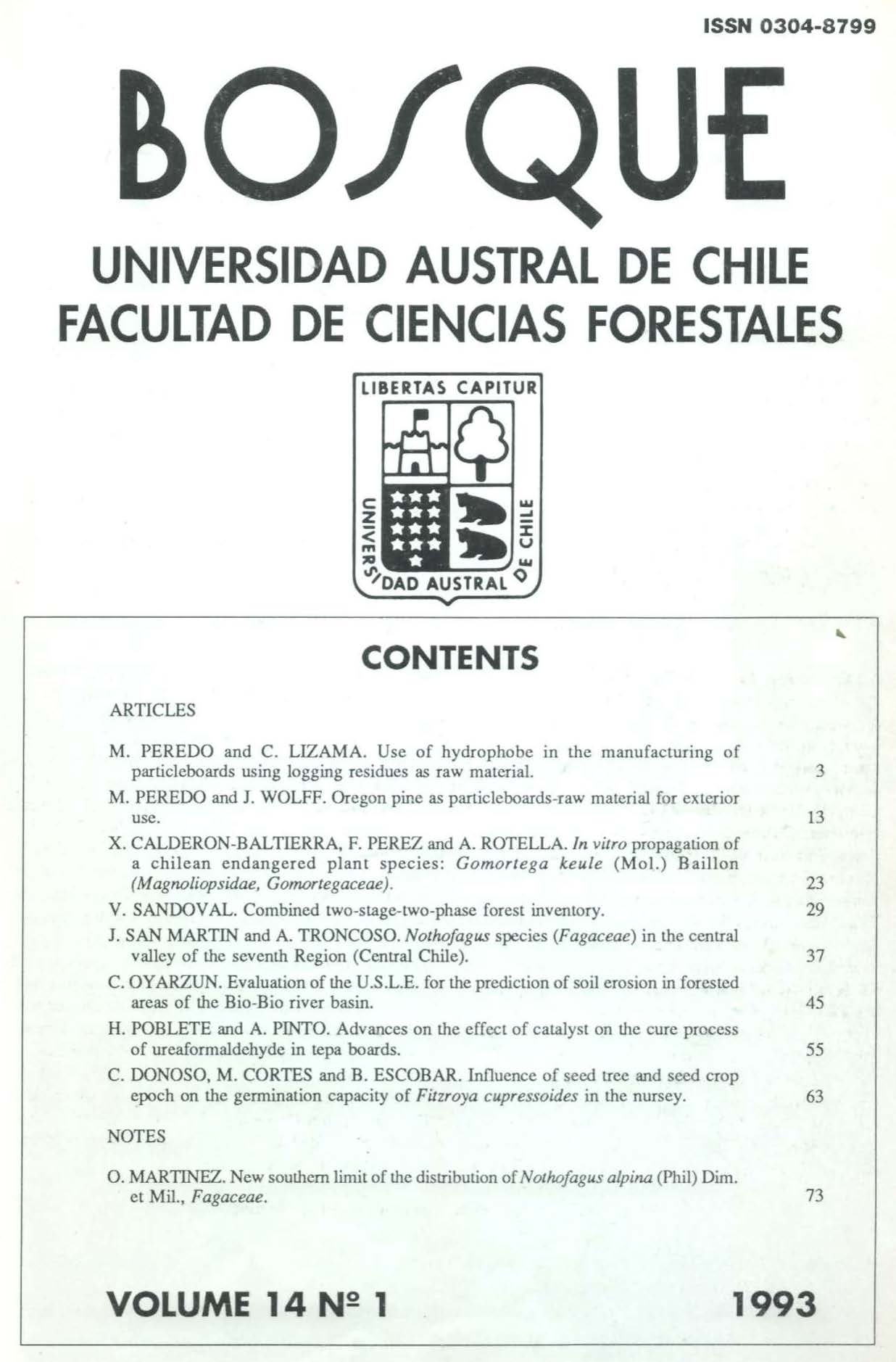Oregon pine as particleboards-raw material for exterior use
Main Article Content
Abstract
The feasibility of using Pino oregon (Pseudotsuga menziesii) as a raw material in the elaboration of particle boards for exterior use was evaluated. The objectives of the study were to determine the toxicity of two preservatives used to combat three different fungii. Three-layered-boards, 11 mm wide with a 700 kg/m3 density were elaborated. A phenol-formaldehyde adhesive, and a catalyst in a 10% ratio to the weight of the solid resin were used. Twelve and 8% b.o.d.w. were used as gluing factors for the external and middle layers respectively. The conditions for pressing were: 180° C temperature, 5.5 minutes total time and maximum and minimum pressures of 2.5 and 1.25 N/mm2 respectively. The values of resistance of the boards when subject to mechanical test of tensile and bending strength amply surpass those set by the DIN norm 68 763. Swelling presented relatively high values. All the boards analyzed surpass, on average, 38% of the maximum value determined by the norm for a 24-hour immersion in water. The toxicity of the preservatives used, applied in different concentrations, confirmed their efficiency since mass loss and tensile strength corresponded to the values established by the corresponding norms. The analysis of the results indicate that it is technically possible to include Pseudotsuga menziesii as raw material in the elaboration of particle boards for exterior use.

